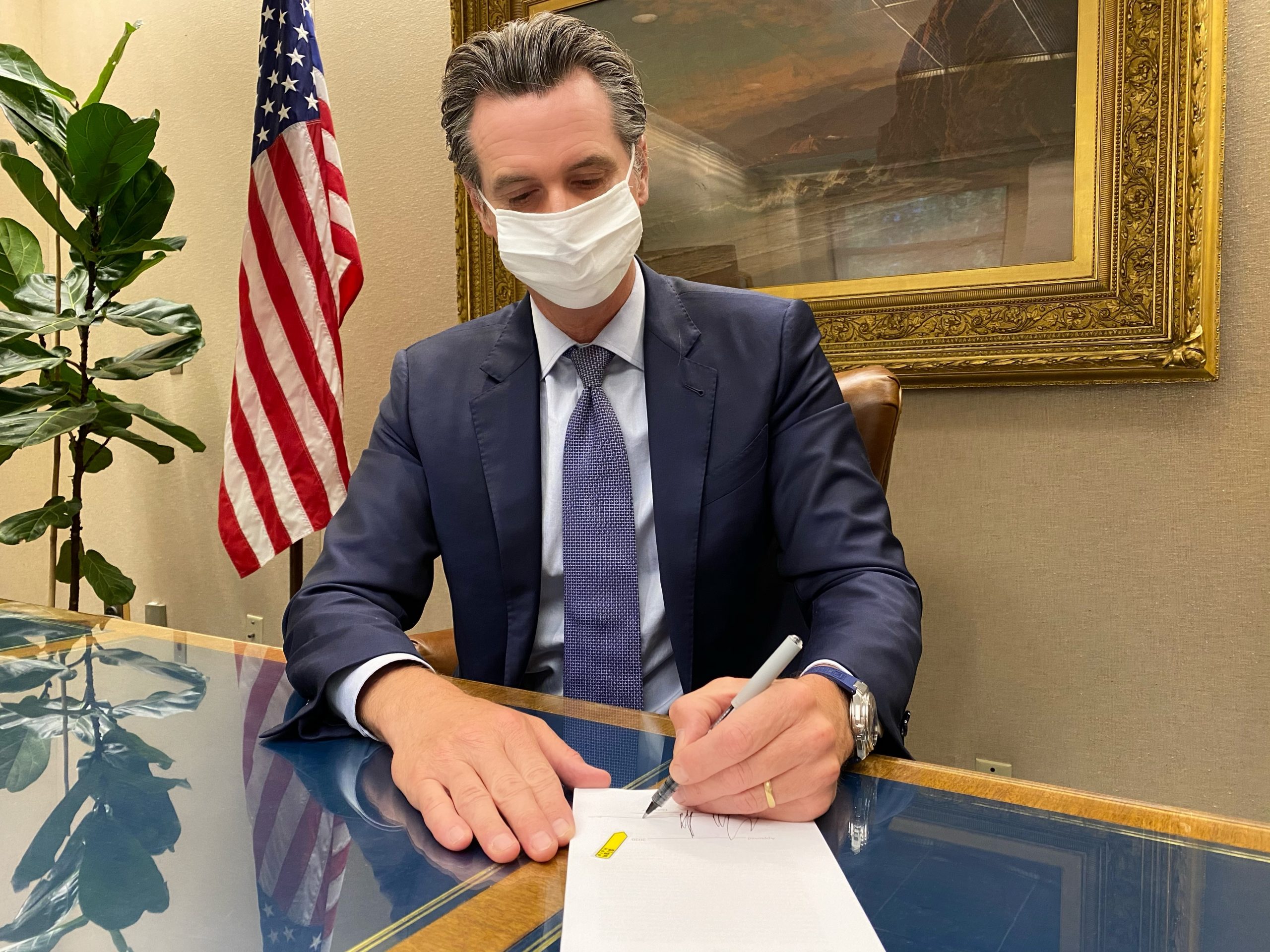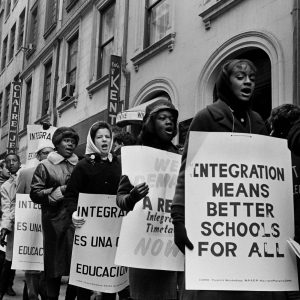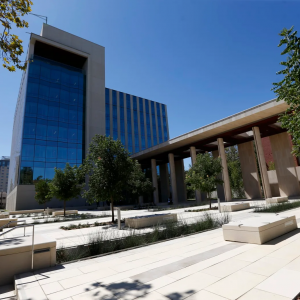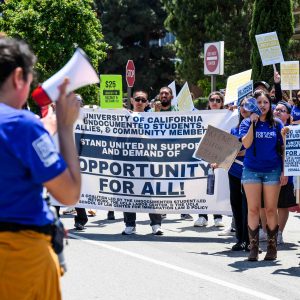When Covid-19 entered the United States, local and state California officials banded together to eradicate the spread and growth of the virus, implementing and re-assessing the functions of most of the states’ institutions and businesses. Indoor operations such as bars, movie theaters and restaurants were mandated to immediately close at the start of California’s stay-at-home order. Most businesses expected to close indefinitely. For these business owners, Covid-19 cost them a steady flow of income. Fortunately, on March 25, Congress passed the Coronavirus Aid, Relief and Economic Security (CARES) Act, which provided small businesses with some support through this unprecedented time.
Yet for some members of the state, like students and teachers, economic relief on an institution-wide level has been more difficult to come by. Plans to rebuild the already-faulty structure of California public education have been put on hold while the state looks for ways to distribute funding to remedy the greater losses incurred during Covid-19.
Prior to the stay-at-home mandate, California Governor Gavin Newsom had big plans to rework public education within the state, offering greater aid to low-income schools through his 2020-21 Budget Plan. This proposal was founded on the basis that California’s economy was “eliminating debts, paying down pension liabilities, [and] growing […] reserve funds.” Now, as the state faces growing debt and unemployment aid requests, the once prosperous economy Gov. Newsom relied upon is no longer a reality.
Gov. Newsom’s budget promoted promises ranging from tackling state-wide homelessness to historically greater funding for K-12 public schools. For educators, this proposed budget would have allowed for $900 million in state-wide teacher training, another $900 million for specialized programs and $600 million to expand support services for low-income schools and develop mental health services for many community schools. Under these promises, teachers would have received the necessary tools to create and foster an ideal learning environment for all students, but most notably, low-income students. In order to implement these initiatives, Gov. Newsom expected his budget plan to cost a little over $222 billion to the state.
In early March, however, California’s economic success was quickly met with the detrimental impacts of Covid-19. Businesses shut down and more than 10,000 schools within the state closed their doors to the 6 million students they served. In order for these students to find academic success under the new Covid-19 circumstances, hundreds of California schools had to quickly transition normal in-person learning into an online platform. As a fairly new medium for academic instruction, online learning has come with some great challenges for both teachers and their students.
Ilise Faye, the head of Hollywood SchoolHouse in Los Angeles, California has seen a “decline in social connection, social-emotional learning” and has struggled to find “different ways to connect and present material.” Faye understands that a large part of a students’ success can be attributed to the connection students make with their teachers in the classroom.
For Faye’s students, online learning has also come with the challenges of working from home in close quarters with micro-managing or absent parents. For many hands-on parents, this new form of learning has given them a “mirror into the classroom, so they are giving critiques all the time on teachers […] and questioning everything they are doing …,” states Faye.
The transition from in-person to online learning has not only created a great disconnect between students and the classroom in California but recent studies have shown that low-income and minority students are being hit the hardest by the unexpected implementation of involuntary online learning. These students could face more difficulties “because of the disparities in access to computers, home internet connections and direct instruction from teachers.” While online learning has produced immense struggles for all students, Black and Hispanic students are more likely to experience an even greater loss of learning ,which can be attributed to the lack of “instructional expectations” put on students and teachers within these lower-funded classrooms. The relaxation of the normal academic expectations came from these schools’ understanding that some students and teachers may not have access to computers or the internet while working or learning from home. For low-income housing, “especially families both working out of the home, these children are left to their [own] devices and they’re not in [the physical classroom…] learning as much. They can easily shut their screen off [midway through instruction],” Faye states. She adds that it is easier for students to disengage from what they are learning when school transitioned to an online platform, as these students now have the power to turn off their cameras and leave the room without the teacher knowing exactly what is happening with the student on the other end.
Gov. Newsom’s previous hopes for reforming and strengthening low-income schools can be seen in the January budget plan. Within California, the both ethnic and financial diversity of students plays a major role in creating and defining the achievement gap among students. This gap is most intensely recognized in the annual standardized tests implemented by the state. These statewide administered tests help the state to get a better sense of how students perform in school and their relative academic success to other students within different counties in the state. Essentially, students who attend these low-funded schools continue to perform at a less-than proficient rate compared to the students who have the financial means to live in an area with highly-functioning public schools.
As a way to combat this widening gap, Gov. Newsom set aside funding in his January plan to “make it more affordable to become a teacher and offer more pay for them to serve” under-funded, high-need schools. Some of this funding would come from the money collected under Proposition 98, a measure passed in 1988 that set a state-wide minimum funding level for California public schools. Unfortunately, “when tax revenue declines, so does funding for schools” and, more importantly, when student enrollment declines, so does the school’s net revenue. In the face of such great uncertainty and as Covid-19 continues to restrict and reconfigure the functioning of California public schools, the cost of attending schools seems less attractive to more and more students. For many low-income students, the widening of the achievement gap coupled with the sustained cost of remote learning could cause a likely increase in dropout rates.
Under these already detrimental conditions for minority and low-income students and families, and due to Covid-19’s major hit to the U.S. economy, Gov. Newsom was forced to work with the economic downturn and re-prioritize his budget plan. In May of this year, Gov. Newsom released an updated version of the January budget plan, one that had to accommodate for the drastic rise in unemployment and quick accumulation of state-wide debt. Much of the new proposal directed the states’ funding towards small businesses and working families. In order to financially support these businesses and stimulate the employment rate, some of the funding that was initially promised to California public education was lost. Instead of the projected $84 billion in funding for K-12 California public schools in his January proposal, economic deficiencies lowered these institutions’ funding by $19 billion. For most K-12 schools to maintain and function at an adequate level, these schools need about $82 billion in a fiscal year, an amount that cannot be guaranteed to California public schools now in the face of Covid-19.
To be sure, Gov. Newsom has continued to make great strides towards advancing public education despite the grave economic disparity throughout the nation. On April 1, 2020, Gov. Newsom announced an agreement “between teachers, classified employees, school boards, superintendents, and principals to work together to provide distance learning to California’s students as a result of school closures.” This part of the agreement helps to unify teachers within different districts to better manage and serve California students. Moreover, Gov. Newsom announced a new partnership with Google to provide 100,000 hotspots throughout the state along with a supply of chromebooks for students who have trouble accessing and connecting to digital learning. Gov. Newsom has also asked for more companies to invest in today’s online public education.
In a similar way, public schools and universities at a local level are doing everything they can to provide students with the necessary resources to keep up online. For example, following the closure of the UC Berkeley campus in mid-March, the UC Berkeley Covid-19 Student Relief Circle worked together to create an online center where students can apply for aid. This funding can relieve students experiencing housing, food, mental health and technical issues during the pandemic.
Although the likelihood of in-person learning resuming in the near future is slim, California public education institutions must continue to look for ways to support and survive low-income, disadvantaged students as well as support students who have been mentally exhausted by the impacts of Covid-19. Schools should look to implement free counselors, therapists or emotional support groups like they have done with Covid-19 testing. And these institutions should also look for ways to re-attract students.
Head of School Faye has made it her mission to encourage her teachers to authenticate and individualize their classrooms to foster active engagement and focus from their students. Faye understands that each of her teachers have a unique style of presenting the set curriculum; they bring laughter, humor and their own personality to their classrooms. Now, as her school has transitioned online, Faye has asked her teachers to continue to add their own personal twists to the curriculum and steer clear from becoming too mechanical and unengaging online. If we continue to let remote learning take away from the importance of a student’s education, these students will begin to miss out on the future success and opportunities that can only be achieved in in-person, individualized learning environments.
California public schools are beginning to reopen virtually this Fall 2020 and have slowly begun to adapt new initiatives and implement relief funds to balance out the detrimental effects Covid-19 has burdened on their students. These new initiatives include refunds and reimbursements for student housing and greater funding to support the nutritional needs of students attending schools far away from home.
As Head Principal Faye’s school reopened, she has had to hire more staff and create new learning environments to give her students that individualized one-on-one attention she believes is needed for students to thrive in the classroom. “We have to invest more in [our students] so that we can help our future, because this is our future and we have to invest in it now more than ever,” states Faye.
In order for California public schools to support their students and teachers, more funding must be redirected into these schools. Unfortunately, Covid-19 has produced great economic decline and more sectors of California, including public health and public wealth, have asked the state to direct the same economic attention towards them. California must first and foremost protect the residents that live within the state. Whether this means medical, educational or fiscal protection, the state must continue to direct and set aside funding for those drastically impacted by the times. These communities include low-income families, students and workers, small business owners and public health workers. The list goes on.
To sustain the valued diverse and unique communities within California, Gov. Newsom must continue to financially support these individuals and look for ways to simultaneously tackle the effects of Covid-19 while not forgetting the promises he has made to California public educators and students.
Featured Image Source: CA Government






Comments are closed.